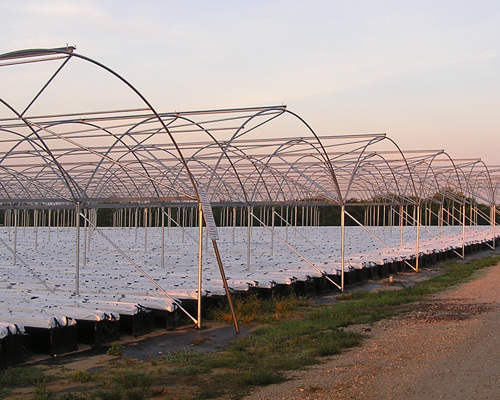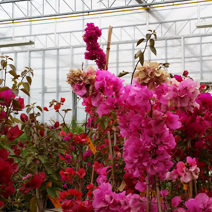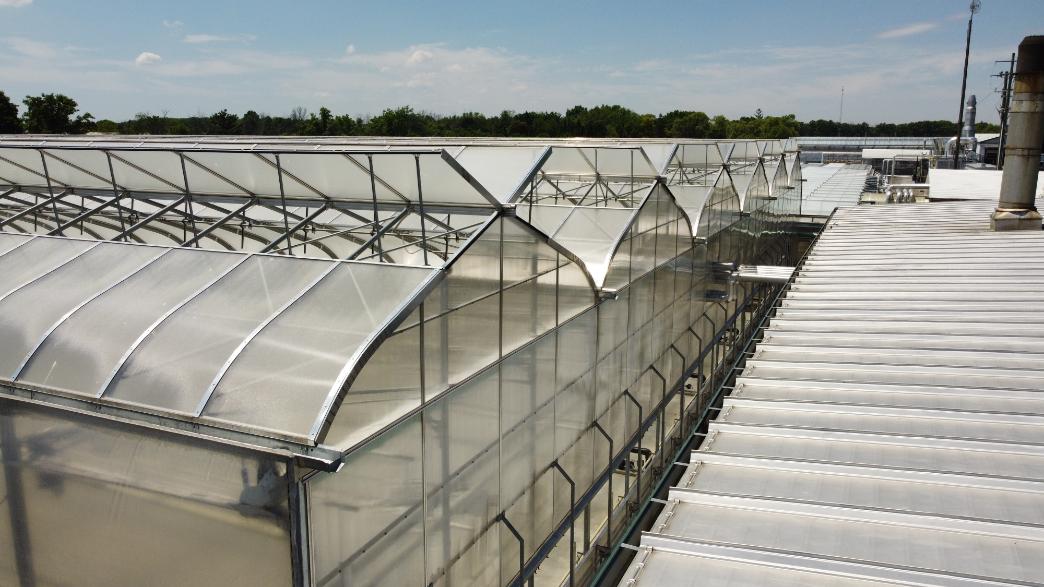High Tunnels, Hoop Houses, Coldframes, Low Tunnels, and Polytunnels
A Cold Frame by any other name is still a Coldframe. Or for that matter you could say a Hoop House is a hoop house is a Hoop House. And then what is with these High Tunnels and Low Tunnels and Polytunnels? For such a simple structure it is amazing the number of names that it has been given over the years. So, in an effort to clear up any confusion, we thought we would explain a little bit more about this simple and cost effective structure, and some of the many uses growers have found for it.

Coldframes originally got their name because of their popularity as overwintering structures. Nursery growers around the world use these simple hoop structures to cover dormant nursery crop in the winter when no heat was needed but frost protection was an advantage. And because they had no heat a Cold Frame was literally that. Cold Frames for nursery production typically are not equipped with the usual environmental controls you see in a greenhouse, so they are classified differently than greenhouses.
The coldframe arch comes in either a single piece Quonset arch design, or a two piece Gothic arch which provides a little extra height and is more cost effective to transport across the country. Ground posts are easily pound into typical farm soil, and arches slip overtop the posts and are connected with purlins to be quickly assembled into a structural framework. In spring the nursery growers remove the white overwintering plastic, and nursery stock can be left in place or moved depending on the grower’s needs.

Now because of the shape of the Quonset arch on a cold frame, these structures are also popularly called Hoop Houses. While the structure is essentially the same the migration from the name Cold Frame to Hoop House is significant because growers found that Hoop Houses could also be good for growing crops year round. Instead of white overwintering plastic, Hoop House growers cover their Coldframe with greenhouse grade poly. By adding fan ventilation or natural ventilation, most commonly with rollup sides, Coldframes have become an economical starter greenhouse for hundreds of growers.
While these Hoop Houses have been good starter greenhouses that is not to say that they have not also found a home with many a large growers who prefer the smaller air volume and distinct environment that a series of Coldframes can give to a grower of a large variety of plants.
Well it is not hard to see how a Coldframe with white overwintering poly, and a Hoop House with a double layer of 4 year greenhouse plastic, could both nicely fall under the name Polytunnel. And so Polytunnel in many areas of the world is a natural description for these Cold Frame Hoop Houses.
As Coldframes gained acceptance as economical low tech greenhouses, the name High Tunnel emerged as a way of differentiating the commercial Coldframe structure with the low framed box that gardeners called a Cold Frame. The High Tunnel was a name that conveyed that regular commercial Coldframes offered heights of 7 – 10 feet, enough for workers to walk comfortably underneath the hoops.
Generally speaking High Tunnels are still considered to be temporary structures with anchor posts pound directly into the soil without the use of a concrete foundation. High Tunnels may be heated with unit heaters in the winter, but are still more commonly unheated structures used for extending the growing season of crops that are often left uncovered in summer months.

Some manufacturers have extended the term High Tunnel to include side connected Hoop Houses used for extending the growing season of field crops, at GGS these are called Crop Protectors, while others leave the term High Tunnel strictly to single arch structures like Coldframes. If you are talking about purchasing a High Tunnel it is important to define what exactly you mean so that you are getting the structure you intend to grow in.
And while High Tunnels quite naturally explain that there is some height to your hoops, Low Tunnels have answered the segment of the grower market that doesn’t want extra height. In many cases lower smaller hoops are what a grower desires, particularly for ground cover. Low Tunnels quite naturally answer to those growers.
If you are looking for an economical structure, consider a GGS Coldframe, our arches are shipped all over the world, and it doesn’t matter if you prefer to call it a Hoop House, High Tunnel, Polytunnel, or any other name I may have missed.








